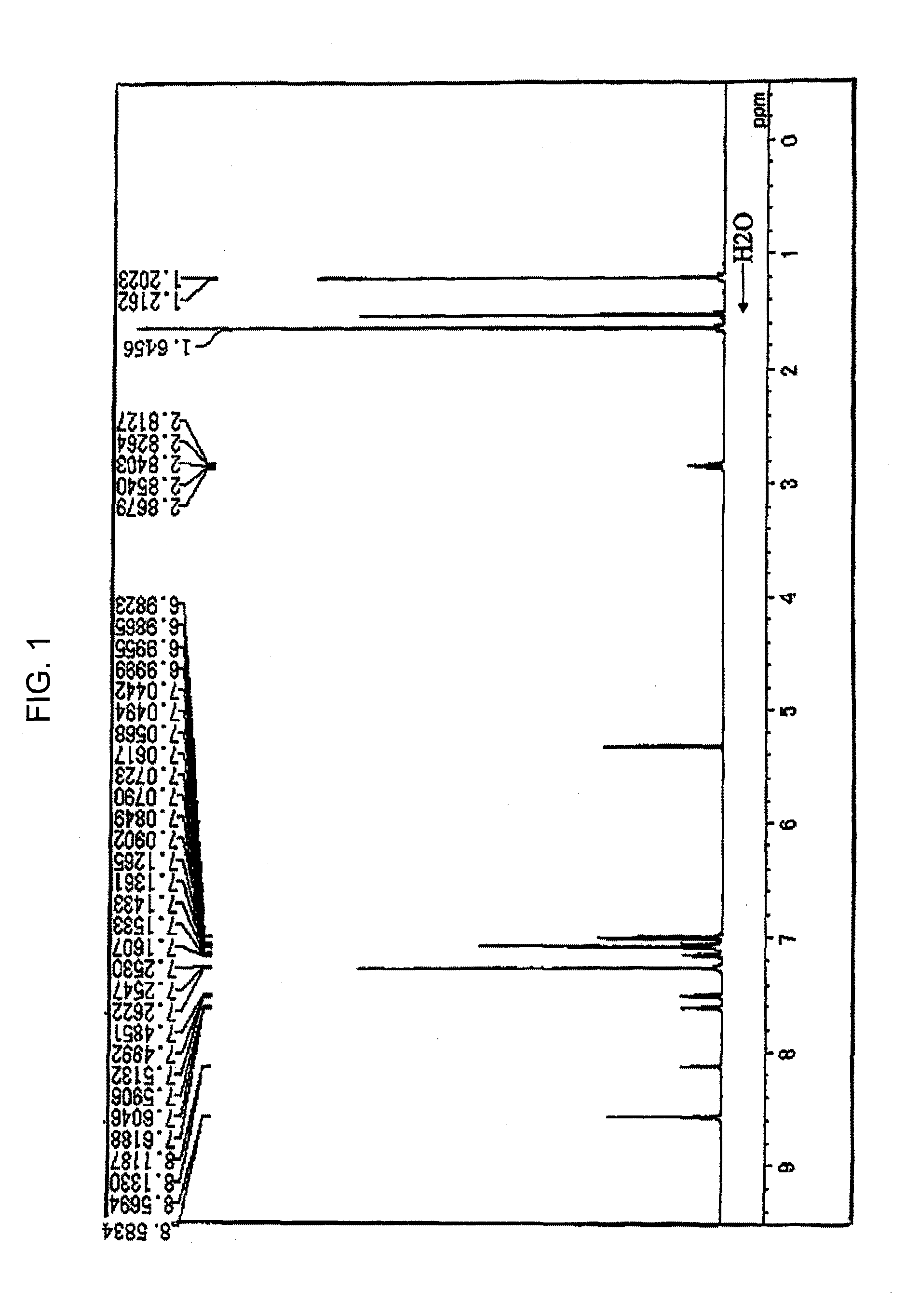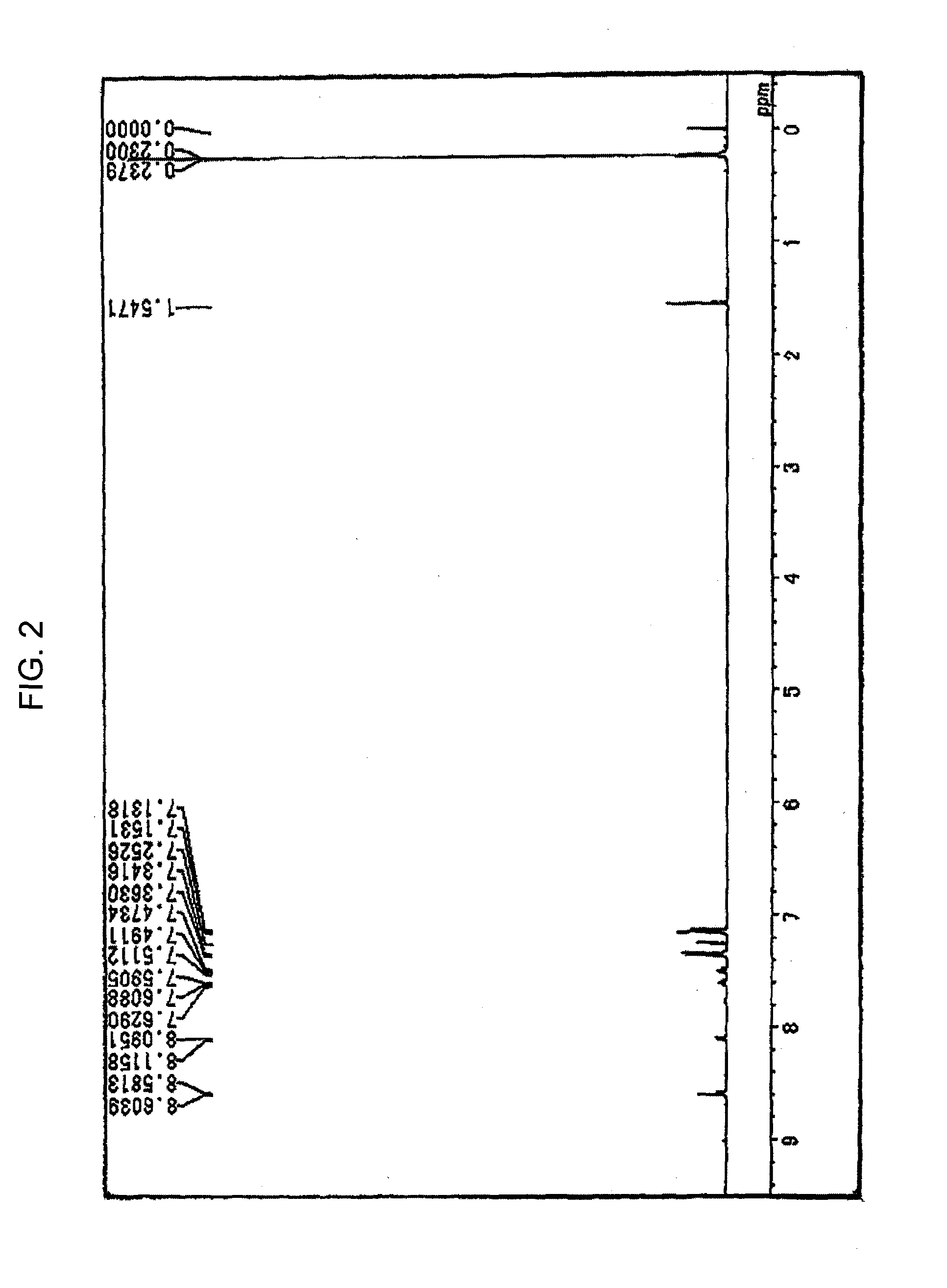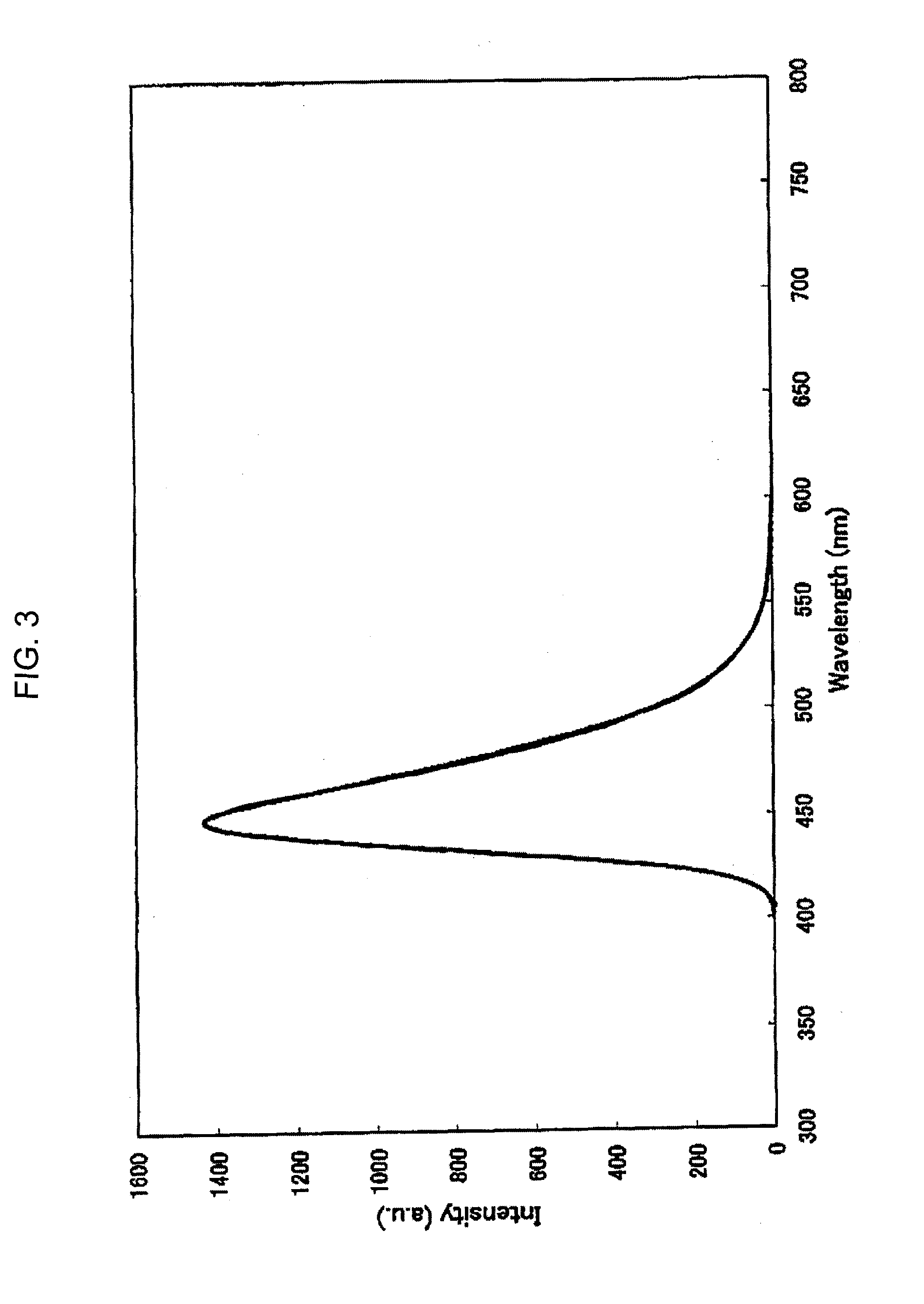Material for organic electroluminescent element and organic electroluminescent element employing the same
- Summary
- Abstract
- Description
- Claims
- Application Information
AI Technical Summary
Benefits of technology
Problems solved by technology
Method used
Image
Examples
synthesis example 1
Synthesis of Compound (D-2-3)
[0123] Under a stream of argon, 3.8 g (10 mmole) of 6,12-dibromochrysene, 8.2 g (25 mmole) of 4-isopropylphenyl-N-4-(2-phenylpropane)phenyl)amine, 0.03 g (1.5% by mole) of palladium acetate, 0.06 g (3% by mole) of tri-t-butylphosphine, 2.4 g (25 mmole) of t-butoxysodium and 100 ml of dry toluene were placed into a 300 ml three-necked flask equipped with a condenser, and the resultant mixture was heated at 100° C. under stirring for one night. When the reaction was completed, the formed crystals were separated by filtration and washed with 50 ml of toluene and 100 ml of methanol, and 7.0 g of a white powder substance was obtained. The obtained product was identified to be Compound (D-2-3) from the 1H-NMR spectrum (refer to FIG. 1 and Table 1) and by the measurement in accordance with the field desorption mass spectroscopy (FD-MS) (the yield: 80%). The 1H-NMR spectrum was obtained using DRX-500 manufactured by BRUCKER Company in a heavy methylene chloride ...
synthesis example 2
Synthesis of Compound (D-2-6)
[0124] Under a stream of argon, 3.8 g (10 mmole) of 6,12-dibromochrysene, 9.2 g (25 mmole) of 4-cyclohexylphenyl-N-4-(2-phenylpropane)phenyl)-amine, 0.03 g (1.5% by mole) of palladium acetate, 0.06 g (3% by mole) of tri-t-butylphosphine, 2.4 g (25 mmole) of t-butoxysodium and 100 ml of dry toluene were placed into a 300 ml three-necked flask equipped with a condenser, and the resultant mixture was heated at 100° C. under stirring for one night. When the reaction was completed, the formed crystals were separated by filtration and washed with 50 ml of toluene and 100 ml of methanol, and 7.6 g of a white powder substance was obtained. The obtained product was identified to be Compound (D-2-6) by the measurement in accordance with FD-MS (the yield: 80%). The obtained compound had a wavelength of the maximum absorption of 408 nm and a wavelength of the maximum fluorescence of 454 nm as measured in a toluene solution.
synthesis example 3
Synthesis of Compound (D-4-1)
[0125] Under a stream of argon, 3.8 g (10 mmole) of 6,12-dibromochrysene, 7.8 g (25 mmole) of bis(4-trimethylsilylphenyl)amine, 0.03 g (1.5% by mole) of palladium acetate, 0.06 g (3% by mole) of tri-t-butylphosphine, 2.4 g (25 mmole) of t-butoxysodium and 100 ml of dry toluene were placed into a 300 ml three-necked flask equipped with a condenser, and the resultant mixture was heated at 100° C. under stirring for one night. When the reaction was completed, the formed crystals were separated by filtration and washed with 50 ml of toluene and 100 ml of methanol, and 5.1 g of a light yellow powder substance was obtained. The obtained product was identified to be Compound (D-4-1) from the 1H-NMR spectrum (refer to FIG. 2) and by the measurement in accordance with FD-MS (the yield: 60%). The obtained compound had a wavelength of the maximum absorption of 402 nm and a wavelength of the maximum fluorescence of 448 nm as measured in a toluene solution (refer to ...
PUM
| Property | Measurement | Unit |
|---|---|---|
| Percent by mass | aaaaa | aaaaa |
Abstract
Description
Claims
Application Information
 Login to View More
Login to View More - R&D
- Intellectual Property
- Life Sciences
- Materials
- Tech Scout
- Unparalleled Data Quality
- Higher Quality Content
- 60% Fewer Hallucinations
Browse by: Latest US Patents, China's latest patents, Technical Efficacy Thesaurus, Application Domain, Technology Topic, Popular Technical Reports.
© 2025 PatSnap. All rights reserved.Legal|Privacy policy|Modern Slavery Act Transparency Statement|Sitemap|About US| Contact US: help@patsnap.com



